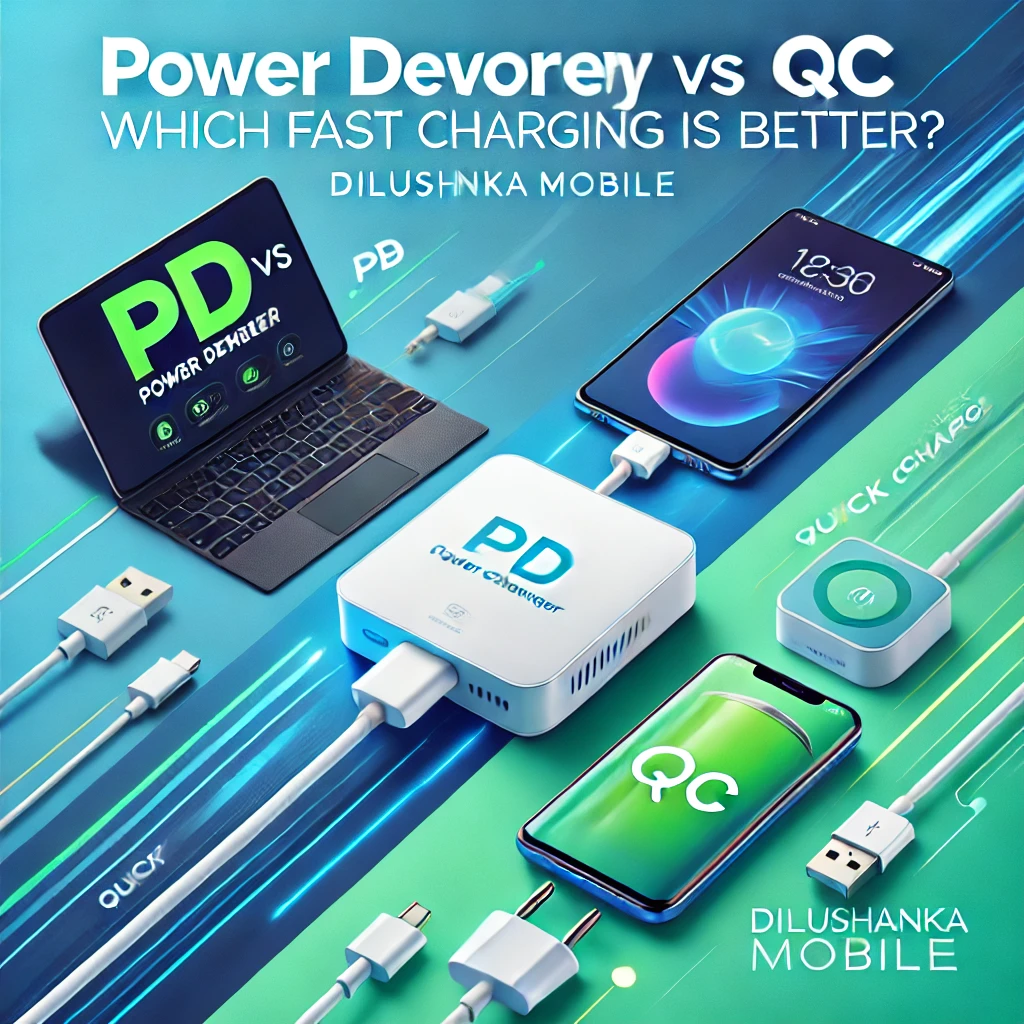Mobile Chargin QC and PD explain
Power Delivery (PD) vs. Quick Charge (QC): What’s the Difference? 
Fast charging has become essential for modern smartphones, tablets, and even laptops. However, with multiple fast-charging standards available, it can be not very clear to understand which one is best for your device. Two of the most common technologies are Power Delivery (PD) and Quick Charge (QC). In this guide, we will explore PD and QC, their differences, and which is best for your charging needs.
What is Power Delivery (PD)?
USB Power Delivery (USB PD) is a fast-charging protocol developed by USB-IF (USB Implementers Forum). It is designed to offer a universal charging standard that can deliver higher power levels for various devices, from smartphones to laptops.
Key Features of Power Delivery (PD)
- Universal Compatibility: Works with a wide range of devices, including smartphones, tablets, laptops, and accessories.
- High Power Output: Supports up to 240W (USB PD 3.1), making it ideal for high-power devices like MacBooks and gaming laptops.
- Dynamic Voltage Adjustment: Supports different voltage levels, such as 5V, 9V, 12V, 15V, and 20V, ensuring safe and efficient charging.
- USB-C Connector: Uses the USB-C port, making it future-proof and widely adopted across devices.
- Smart Charging: Negotiates the best power level between the charger and the device to prevent overheating and overcharging.
What is Quick Charge (QC)?
Qualcomm Quick Charge (QC) is a fast-charging technology developed by Qualcomm, primarily for smartphones and tablets using Snapdragon processors. It is widely adopted in Android devices and is designed to charge batteries faster while maintaining efficiency and safety.
Key Features of Quick Charge (QC)
- Optimized for Qualcomm Devices: Works best with Snapdragon-based Android smartphones.
- Fast Charging Speeds: Quick Charge 5.0 can deliver up to 100W of power.
- Multi-Voltage Support: Supports 5V, 9V, 12V, and 20V, depending on the Quick Charge version.
- Backward Compatibility: Works with older Quick Charge versions (QC 2.0, 3.0, and 4.0).
- USB-A and USB-C Compatibility: Unlike PD, QC supports both USB-A and USB-C ports.
PD vs. QC: Key Differences
| Feature | Power Delivery (PD) | Quick Charge (QC) |
|---|---|---|
| Developer | USB-IF | Qualcomm |
| Max Power Output | 240W | 100W |
| Connector Type | USB-C | USB-A, USB-C |
| Voltage Levels | 5V, 9V, 12V, 15V, 20V+ | 5V, 9V, 12V, 20V |
| Best Use Cases | Smartphones, tablets, laptops, gaming devices | Android phones, tablets, accessories |
| Device Compatibility | Universal (Apple, Android, laptops, etc.) | Mostly Qualcomm Snapdragon devices |
| Charging Efficiency | Smart voltage negotiation | Fixed voltage steps |
| Port Availability | USB-C only | USB-A & USB-C |
Which One Should You Choose? 🚀
The best fast-charging technology depends on your specific device and use case:
- Choose Power Delivery (PD) if:
- You want a universal charging standard for various devices (smartphones, tablets, laptops).
- You use a MacBook, iPad, or any other device that supports USB-C PD.
- You need a higher power output for power-hungry devices.
- Choose Quick Charge (QC) if:
- You have a Qualcomm Snapdragon-powered Android smartphone.
- You use older charging accessories that support USB-A.
- You want fast charging without needing USB-C exclusively.
Final Thoughts
Both Power Delivery (PD) and Quick Charge (QC) offer excellent fast-charging solutions, but PD is more versatile and future-proof, while QC is optimized for Qualcomm-powered Android devices. Many modern chargers now support both PD and QC, so you can enjoy the best of both worlds.
If you’re buying a new charger, make sure to check its compatibility with your device to get the fastest and safest charging experience possible!